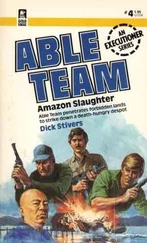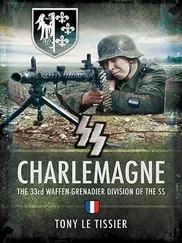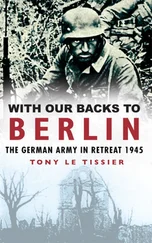In the plan for the 1st Ukrainian Front the task of helping the 1st Byelorussian Front to capture Berlin was stated in a general way, but in the order issued to 3rd Guards Tank Army it was concrete:
‘On the fifth day of the operation to seize the area of Trebbin, Zauchwitz, Treuenbrietzen, Luckenwalde… To bear in mind the possibility of attacking Berlin from the south by a reinforced tank corps and an infantry division of the 3rd Guards Army.’
Thus, even before the operation began, one tank corps and an infantry division were earmarked for attacking Berlin from the south.
It seemed strange and incomprehensible, when one was advancing along what amounted to the southern fringe of Berlin, to leave it deliberately untouched to the right of one’s flank, particularly in circumstances when one had no preliminary knowledge of how things might work out in the future. The decision to be ready to deliver such an attack seemed clear, comprehensible and self-evident. [12] Ibid., pp. 88–9.
In contrast to Stalin in the splendour of the Kremlin, Adolf Hitler, the Führer of the Third Reich and Supreme Commander of the German Armed Forces, was exercising his authority from a new command bunker beneath the Old Chancellery building in the Wilhelmstrasse, into which he had moved on 16 January. He now lived and worked in an oppressive atmosphere of noisy air-conditioning and sweating concrete walls, with no distinction between night and day. The Führerbunker also suffered the serious defect of being inadequately equipped with communications facilities for its role. This was in part due to scale, for accommodation was extremely cramped in the Führerbunker itself, although more space could have been made available in the bomb-proof shelters beneath the New Chancellery building next door. However, the only communications facilities installed in the Führerbunker were a one-man switchboard, one radio transmitter and a radio telephone, which was dependent upon an aerial suspended from a balloon. [13] Rocolle, Götterdämmmerung – La Prise de Berlin, p. 14; Guderian, Panzer Leader, pp. 323–5.
The German Army’s once powerful General Staff had been utterly broken by the purge following the unsuccessful assassination attempt against Hitler of 20 July 1944, and its representatives in Hitler’s entourage were now mere sycophants. Permanently with Hitler in the Führerbunker was Field Marshal Wilhelm Keitel, nominal Chief of the Oberkommando der Wehrmacht (OKW – Armed Forces GHQ) with his headquarters in Berlin-Dahlem, but in practice acting as Hitler’s personal chief of staff and issuing orders in the Führer’s name. The OKW Chief of Staff, Colonel-General Alfred Jodl, and the Chief of Staff of the Oberkommando des Heeres (OKH – Army GHQ), General of Infantry Hans Krebs, were obliged to spend most of their time shuttling back and forth between the Führerbunker conferences and the secret wartime headquarters in the vast bunkers known as Maybach I and II respectively, some thirty kilometres south of the city at Zossen–Wunsdorf. [14] Toland, The Last Hundred Days, pp. 1118–19. These bunkers later accommodated the Soviet Army High Command in East Germany.
One has only to read Colonel-General Heinz Guderian’s book, Panzer Leader , to realize how intolerable Hitler’s conduct as a commander was towards the General Staff and what pressure officers were placed under as a result of this. The essence of the problem lay in Hitler’s Führer-system of unquestioning obedience to orders clashing with the General Staff’s system of mutual trust and exchange of ideas, against a background of Hitler’s class consciousness and genuine distrust of the General Staff following the failed putsch of 20 July 1944. [15] O’Donnell, The Berlin Bunker, pp. 40–3.
Hitler’s system of leadership was reflected in the state and composition of the German armed forces. One particularly confusing aspect was the use of corps and army headquarters taken out of reserve to command new formations to which they automatically gave their titles, irrespective of their composition or function. Thus, for example, V SS Mountain Corps commanded only one Waffen-SS formation and no mountain troops, and XI SS Panzer Corps consisted primarily of ordinary infantry units. [16] Tessin, Verbände und Truppen der deutschen Wehrmacht und Waffen-SS, with additional information on the Volksarmee from Tully. Note that the Germans used Roman numerals for their corps formation titles (including the unusual XXXX for 40) but not for their artillery corps. The Soviets did not use Roman numerals at all. Wilke, Am Rande der Strassen, states that on 15 March 1945 an instruction was issued dropping the word ‘Panzer’ from XI SS Panzer Corps’ title and the word ‘Mountain’ from V SS Mountain Corps’ title, but it appears that this was not implemented, as the formations concerned are referred to by their full titles in contemporary documents, as used in this text.
The basic framework of the German ground forces was still that of the German Army, most commonly (though not strictly correctly) known by the overall title of the Wehrmacht. However, after the abortive coup of 20 July 1944, the Army had been seriously weakened by the great purge of officers that followed and by the Nazi leaders’ distrust of the survivors. Political officers ( NS-Führungsoffiziere ) had been appointed to all units and formation headquarters for the purpose of promoting the Nazi spirit and to spy on possible dissidents.
Under the operational command of the Wehrmacht, although technically an entirely separate organization, was Heinrich Himmler’s Waffen-SS, consisting of Panzer (armoured), Panzergrenadier (motorized infantry), cavalry and mountain formations, as well as foreign volunteer elements such as the 23rd SS Panzergrenadier Division Nederland . However, as a result of hard usage most of these formations were now drastically reduced in strength. Despite their elitism, by 1945 the various Waffen-SS units and formations were fully integrated into the Army’s operational system.
Drastic measures had had to be taken to man the defences along the Eastern Front. Marsch (field replacement) battalions had been raised from police, fire brigade, customs and border guard resources, equipped with small arms and sent into combat to serve under their own officers, while sailors and airmen with little or no field training and inadequate equipment were drafted as infantry. Units of the Volkssturm (Home Guard) had also been used to bolster some formations, including some grenadier regiments raised from officer cadet schools.
Nevertheless, the continuing strength of the Wehrmacht lay in its tactical skills, its command system in the field, and its ability to reorganize quickly at all levels. Time and time again the Germans were able to trounce their opponents by means of their superior performance, despite a vast imbalance of numbers.
German field headquarters were kept small and well forward so as to maintain close contact with subordinate commanders, who in turn used experienced officers as their liaison links with those headquarters. Staff officers were highly trained and able to make quick decisions, for their philosophy was that the unexpected could always happen and one must be able to react decisively. Consequently there was a high degree of personal contact and mutual confidence in the command structure. For instance, it was the normal practice for newly appointed divisional generals and their chiefs of staff to attend a General Staff command course so as to practise working as a team before assuming their roles. The reason for this was that, although the commander took final responsibility, his chief of staff issued orders in his general’s name and was entitled to make command decisions on his own authority when the general was away from headquarters. Also, the system of Auftragstaktik (mission-oriented command) left decisions as to how a given objective was to be achieved to the subordinate commander, thus achieving maximum flexibility of response to any given situation. [17] Timmons, ‘Command and Control in the Wehrmacht’.
Читать дальше












